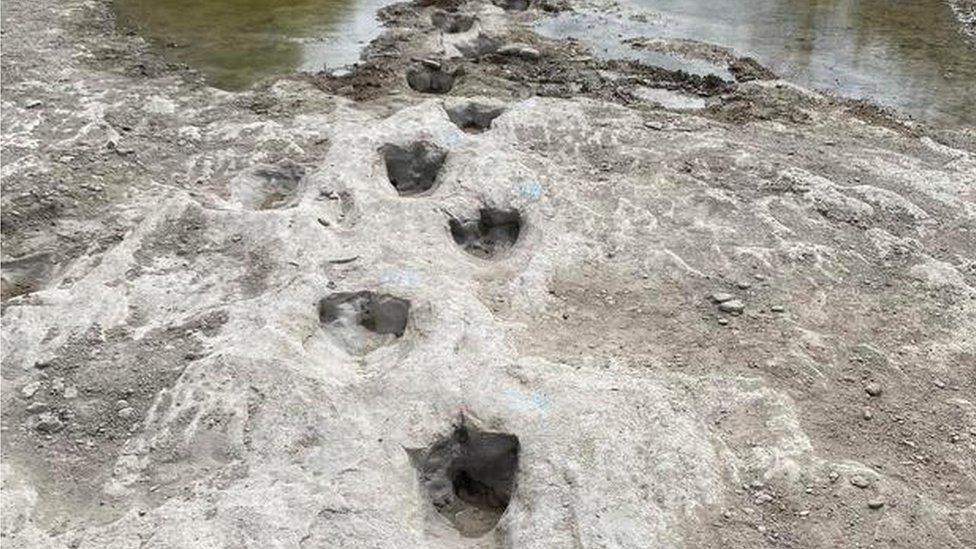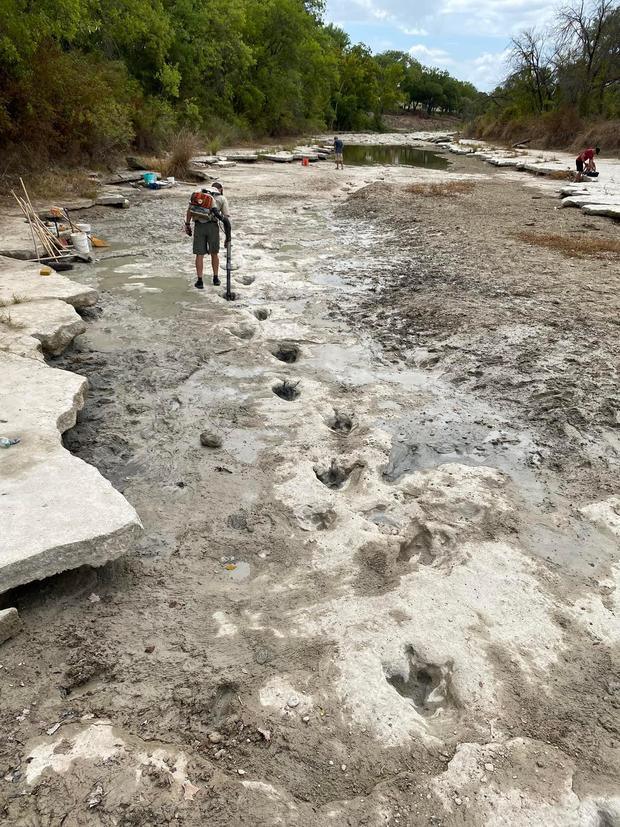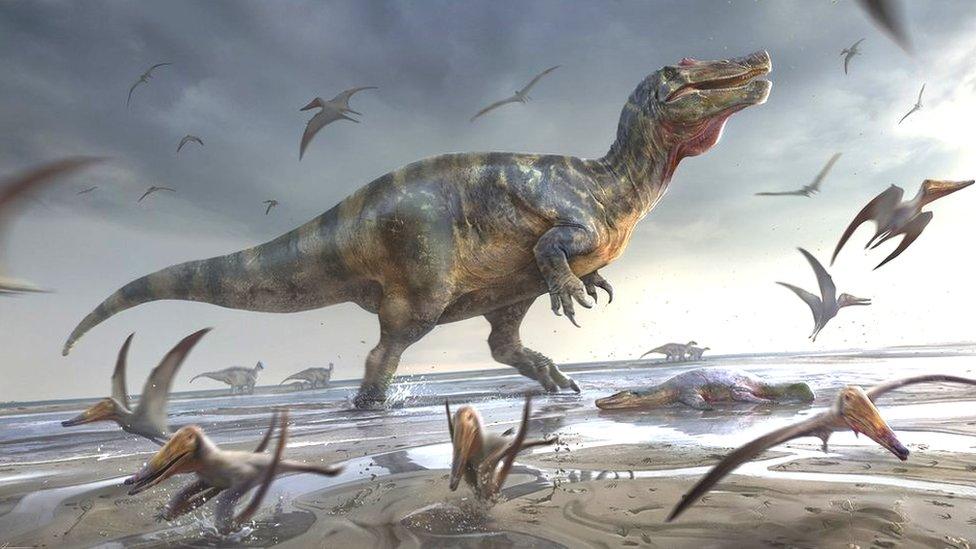Dinosaur tracks from 113m years ago exposed by severe drought
- Published

Dinosaur tracks at Dinosaur Valley State Park in Texas
A severe drought has exposed 113 million-year-old dinosaur tracks on a riverbed in central Texas.
The massive tracks, which belonged to a single acrocanthosaurus, had not been seen since 2000, as they sat under water and several layers of sediment.
The tracks at Dinosaur Valley State Park in Texas are some of the best preserved in the world, said park superintendent Jeff Davis.
Almost all of Texas is facing a drought according to the US Drought Monitor, external.
Last week, more than 87% of the state was experiencing one of the three most serious drought categories - severe, extreme and exceptional.
The summer's excessively dry, hot conditions caused a river in the central Texas park to dry out almost entirely, revealing the dinosaur tracks.
Superintendent Davis told the BBC that the recently exposed tracks are called the "Lone Ranger trackway", belonging to one Acrocanthosaurus, who walked that trail for about 100ft. There are an estimated 140 tracks in total from this one dinosaur, with about 60 visible now.
Acrocanthosaurus were therapods, a "typical three-toed dinosaur", Mr Davis said. Standing at about 15ft tall, they would have weighed about seven tonnes.
These dinosaurs likely preyed upon the Sauroposeidon. the other species whose tracks are also found in the state park.
The Sauroposeidon stood at 60ft tall, with a long neck, and weighed about 44 tonnes when fully grown.
Extreme weather has also led to other surprises.
Human remains have been discovered in Lake Mead - the largest US reservoir - as water levels decline.
And in Europe, receding water levels have revealed "hunger stones" engraved at the waterline of rivers during previous droughts as a warning to future generations that when the stones are above water, suffering lies ahead.

Not all droughts are due to climate change, but excess heat in the atmosphere is drawing more moisture out of the earth and making droughts worse.
The world has already warmed by about 1.2C since the industrial era began and temperatures will keep rising unless governments around the world make steep cuts to emissions.
- Published9 May 2022

- Published9 June 2022

- Published21 August 2022
